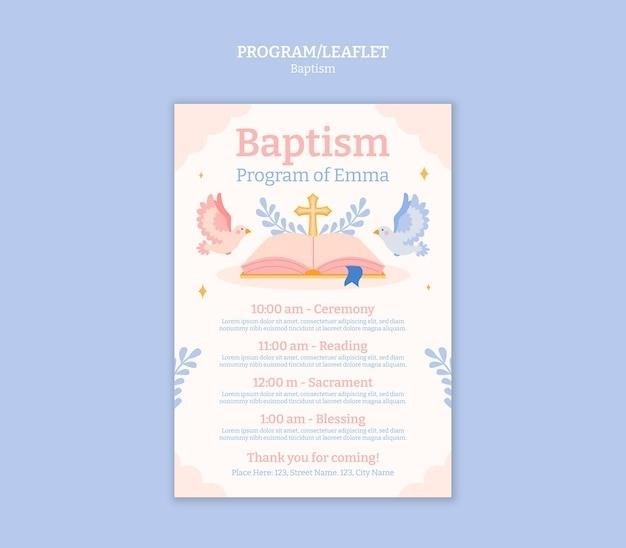ap physics 1 practice exam pdf
AP Physics 1 Practice Exam PDFs⁚ A Comprehensive Guide
Preparing for the AP Physics 1 exam can be a daunting task, but access to quality practice exams is crucial for success. This comprehensive guide will explore the importance of practice exams, provide reliable sources for finding them, delve into the exam’s structure and content, and offer valuable tips for effective practice.
Importance of Practice Exams
Practice exams are indispensable tools for AP Physics 1 preparation, offering numerous benefits that significantly enhance your chances of success. By simulating the actual exam environment, practice exams familiarize you with the format, question types, and time constraints, reducing test anxiety and boosting confidence. They provide valuable insights into your strengths and weaknesses, allowing you to focus your study efforts on specific areas that require improvement. Moreover, practice exams help you develop effective test-taking strategies, such as time management, pacing yourself, and identifying key information within questions.
Engaging with practice exams encourages active learning, promoting deeper understanding of concepts and problem-solving techniques. The detailed answer explanations provided with practice exams offer valuable learning opportunities, clarifying any misconceptions and reinforcing key principles. Through repeated practice, you refine your analytical and critical thinking skills, fostering a more comprehensive grasp of the subject matter. Ultimately, practice exams equip you with the necessary skills and confidence to tackle the AP Physics 1 exam with greater assurance.
Sources for AP Physics 1 Practice Exams
When seeking out AP Physics 1 practice exams, you have two primary sources at your disposal⁚ the College Board, the official exam provider, and reputable third-party resources. The College Board offers a wealth of practice materials, including free-response questions from past exams, along with scoring guidelines, sample responses, and scoring distributions. These resources provide valuable insights into the exam’s structure and content, allowing you to familiarize yourself with the types of questions you might encounter.
Third-party resources, such as online test platforms, textbooks, and study guides, also offer a variety of practice exams. These resources often provide a more comprehensive coverage of the curriculum, including multiple-choice questions and free-response sections, allowing you to test your knowledge across various topics. It’s important to choose reputable third-party sources that align with the AP Physics 1 curriculum and provide detailed explanations for each question. By utilizing both the College Board’s official resources and reputable third-party materials, you can create a well-rounded practice strategy that effectively prepares you for the AP Physics 1 exam.

2.1. College Board
The College Board, the organization responsible for administering the AP Physics 1 exam, provides a valuable repository of practice materials that are essential for exam preparation. Their official website, AP Central, offers a treasure trove of resources, including free-response questions from previous AP Physics 1 exams. These questions are accompanied by detailed scoring guidelines, sample responses from exam takers, and scoring distributions, giving you a clear understanding of what constitutes a successful answer.
The College Board’s resources offer a glimpse into the exam’s format, question styles, and content areas, allowing you to identify your strengths and weaknesses. By analyzing the scoring guidelines and sample responses, you can gain valuable insights into the expectations of the exam graders and learn how to effectively communicate your understanding of the concepts. The College Board’s practice materials are an invaluable tool for honing your problem-solving skills and building confidence in your ability to tackle the AP Physics 1 exam.
2.2. Third-Party Resources
While the College Board offers valuable official practice resources, numerous third-party providers also offer comprehensive AP Physics 1 practice exams. These resources often provide a wider range of question styles, different levels of difficulty, and detailed explanations for each answer. Some popular third-party resources include textbooks like “Cracking the AP Physics 1 Exam” by The Princeton Review, which includes practice tests and content review. Websites like Khan Academy and Varsity Tutors also offer free practice questions and assessments aligned with the AP Physics 1 curriculum.
These third-party resources can be a valuable supplement to the College Board’s official materials. They provide alternative perspectives on the exam content, offer additional practice opportunities, and help you refine your understanding of key concepts. Remember to carefully evaluate the credibility of the resource and ensure that the content aligns with the current AP Physics 1 curriculum. By leveraging both official and third-party resources, you can create a comprehensive practice strategy that maximizes your chances of success on the AP Physics 1 exam.
Exam Structure and Content
The AP Physics 1 Exam is designed to assess your understanding of foundational physics concepts and your ability to apply those concepts to solve problems. The exam is divided into two sections⁚ a multiple-choice section and a free-response section. The multiple-choice section comprises 50 questions, and students are allotted 90 minutes to complete it. The free-response section consists of five questions, including both short-answer and extended-response questions, and students have 90 minutes to complete this section. The exam covers a wide range of topics, including kinematics, dynamics, work, energy, momentum, rotational motion, gravitation, fluid mechanics, thermal physics, electricity, magnetism, and waves.
The AP Physics 1 curriculum framework outlines the specific learning objectives and essential knowledge students need to master. It provides a detailed breakdown of the content covered in each unit and the expected level of understanding. By familiarizing yourself with the curriculum framework and the exam structure, you can effectively target your practice and ensure you are adequately prepared for the exam’s various question types and content areas. Remember to use practice exams to reinforce your knowledge, identify areas for improvement, and develop your problem-solving skills.
3.1. Multiple-Choice Section
The multiple-choice section of the AP Physics 1 Exam is designed to test your understanding of fundamental physics concepts and your ability to apply them to solve problems. This section comprises 50 questions, and students are allotted 90 minutes to complete it. The questions are presented in a variety of formats, including single-select questions, where only one answer choice is correct, and multiple-select questions, where students must choose all the correct answer choices. These questions cover a wide range of physics topics, including kinematics, dynamics, work, energy, momentum, rotational motion, gravitation, fluid mechanics, thermal physics, electricity, magnetism, and waves.
The multiple-choice section is an important part of the AP Physics 1 Exam, as it accounts for a significant portion of the overall score. To excel in this section, you need to develop a strong understanding of the fundamental concepts, practice solving problems in various formats, and familiarize yourself with the different question types. Practice exams are an excellent tool for strengthening your understanding of the material, developing your problem-solving skills, and getting familiar with the exam’s format and style. By focusing on the multiple-choice section, you can build a solid foundation for success on the AP Physics 1 Exam;
3.2. Free-Response Section
The free-response section of the AP Physics 1 Exam is designed to assess your ability to apply your knowledge of physics to real-world scenarios and to communicate your understanding effectively. This section consists of five free-response questions, each requiring a detailed written response that demonstrates your understanding of the concepts involved. These questions are typically presented in a problem-solving format, requiring you to analyze a given scenario, identify relevant physics principles, apply them to solve the problem, and express your solution clearly and concisely.

The free-response questions are graded by experienced AP Physics readers, who evaluate your responses based on the accuracy of your physics concepts, the completeness and clarity of your explanations, the effectiveness of your problem-solving strategies, and the quality of your written communication. The free-response section is a crucial part of the AP Physics 1 Exam, as it accounts for a significant portion of your overall score. To succeed in this section, you need to develop strong problem-solving skills, practice writing clear and concise responses, and familiarize yourself with the different types of free-response questions that may appear on the exam. Practice exams are an invaluable tool for honing these skills and gaining confidence in your ability to tackle the free-response section successfully.
Tips for Effective Practice
Practice exams are essential for AP Physics 1 preparation, but using them effectively is key. Don’t just mindlessly solve problems; approach practice with a strategic mindset. Start by reviewing the AP Physics 1 Course and Exam Description, understanding the content areas and question formats. As you work through practice exams, identify your strengths and weaknesses. Focus on areas where you struggle, using practice to reinforce concepts and master problem-solving techniques. Don’t shy away from challenging questions; use them to stretch your understanding and build confidence in tackling complex scenarios. Time yourself during practice sessions, simulating the actual exam conditions. This helps you manage your time effectively and avoids rushing through questions. Once you’ve completed a practice exam, carefully review your answers, focusing on both correct and incorrect responses. Analyze your mistakes, identify areas for improvement, and revisit relevant concepts or problem-solving strategies. This iterative approach to practice ensures that you learn from your experiences and make continuous progress towards mastering the material.
Scoring and Interpretation
The AP Physics 1 exam is scored on a scale of 1 to 5, with 5 being the highest score. A score of 5 indicates a high level of understanding and mastery of the course material, potentially earning you college credit or advanced placement in physics-related courses. While practice exams don’t provide official scores, they offer valuable insights into your performance. Analyze your results to identify areas where you excel and where you need improvement. Focus on understanding the concepts behind the questions, not just memorizing formulas. Pay attention to the scoring guidelines provided with practice exams, as they offer insights into how the College Board evaluates responses. This information helps you understand the expectations for your answers on the actual exam. Remember that practice exams are tools for learning and improvement, not just for predicting your score. Use them to identify areas where you need to focus your studies, refine your problem-solving skills, and build confidence in your abilities.
Additional Resources
Beyond practice exams, there are numerous resources available to enhance your AP Physics 1 preparation. The College Board’s website offers a wealth of information, including the official AP Physics 1 Course and Exam Description, which outlines the exam’s structure, content, and scoring guidelines. Additionally, the College Board provides access to past free-response questions, complete with scoring guidelines and sample student responses. These resources provide valuable insights into the exam’s format and expectations. For a more comprehensive review, consider exploring textbooks, study guides, and online courses specifically designed for AP Physics 1. These resources can provide detailed explanations of key concepts, practice problems, and strategies for tackling different types of questions. Don’t hesitate to connect with your teacher or a tutor for additional guidance and support. They can provide personalized feedback, address specific areas of weakness, and offer valuable insights based on their experience with the AP Physics 1 exam.


